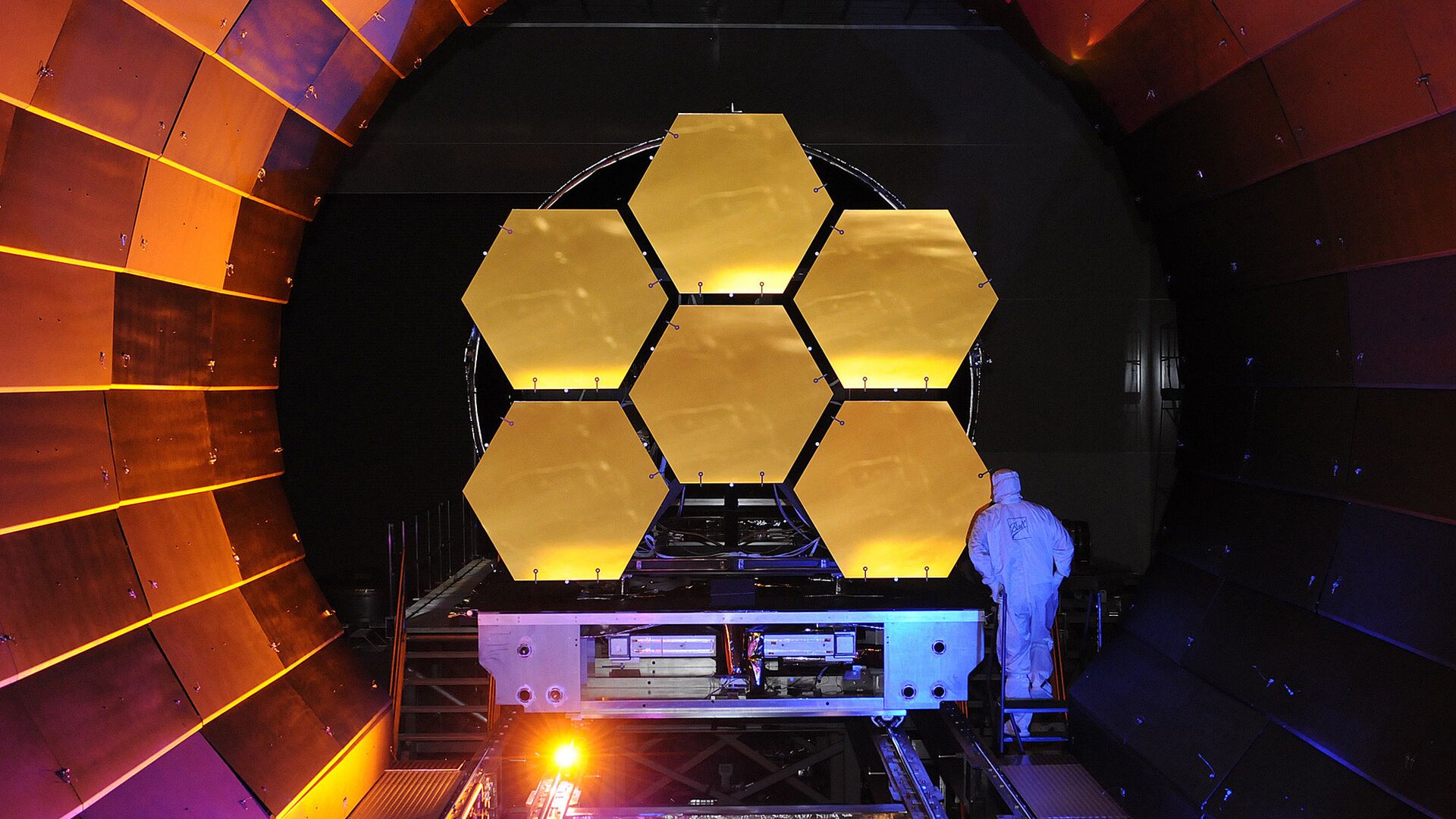James Webb Telescope is 'Blooming Like a Flower' in Space, NASA Says
18:50 GMT 29.12.2021 (Updated: 17:11 GMT 20.06.2023)
Subscribe
The revolutionary observatory, which was under development by the space agency for two decades, embarked on its historic mission on 25 December. The telescope, which is 100 times more powerful than its predecessor Hubble, will be able to "travel back in time" and search for the first stars that appeared after the Big Bang.
The James Webb Space Telescope (JWST) is "blooming like a flower" in space, NASA has said. The space agency posted a statement on social media while updating the public about the telescope’s mission. The blooming that NASA referred to is the unfolding of a massive sunshield the size of a tennis court. This process is the riskiest, NASA said.
The JWST has successfully unfolded the forward and back sunshield pallets, which NASA described as a "cake stand that will hold five layers of sunshield".
The JWST has successfully unfolded the forward and back sunshield pallets, which NASA described as a "cake stand that will hold five layers of sunshield".
Our telescope is blooming like a flower in space! This marks the start of a major phase to #UnfoldTheUniverse: our sunshield deployment. First, what is our sunshield?
— NASA Webb Telescope (@NASAWebb) December 28, 2021
5️⃣ layers
🎾 Opens to the size of a tennis court
🛡️ Protects Webb’s optics from the Sunhttps://t.co/tTGIWqFAz8 pic.twitter.com/jRgd8a4sT1
As the name implies, the sunshield will protect the telescope’s 6.5-metre-wide golden mirror from solar rays. The telescope has also begun the process of extending the Deployable Tower Assembly, which will create space between the spacecraft and the telescope, to allow for better thermal isolation and provide room for the sunshield to deploy.
⬆️ Heads up! At ~9am ET we began to extend #NASAWebb's Deployable Tower Assembly, which creates space between the spacecraft & telescope, helping to keep the telescope cold & giving the sunshield room to deploy. This could take 6+ hours. https://t.co/h3q2S1MvtW #UnfoldTheUniverse pic.twitter.com/huGb7VO6nG
— NASA Webb Telescope (@NASAWebb) December 29, 2021
NASA says it will take a month before the telescope deployment is complete and the observatory starts orbiting the second Lagrangian point, a point in space at which a small body, under the gravitational influence of two large ones (in this case the Earth and the Sun), remains approximately at rest relative to them.
Another six months will pass before NASA researchers receive the first images from the telescope. The space observatory, which took NASA two decades to develop and cost $10 billion, will "travel back in time" by searching for light from the first stars in the Universe. It takes years for light from distant stars to reach the Earth, so by seeing this light, the telescope will be able to observe the stars as they were when the Solar System formed.
In addition to that, the JWST will examine the atmospheres of different planets in order to see if they are habitable.

